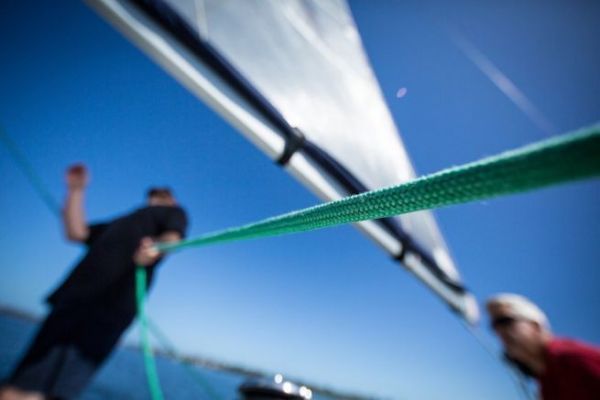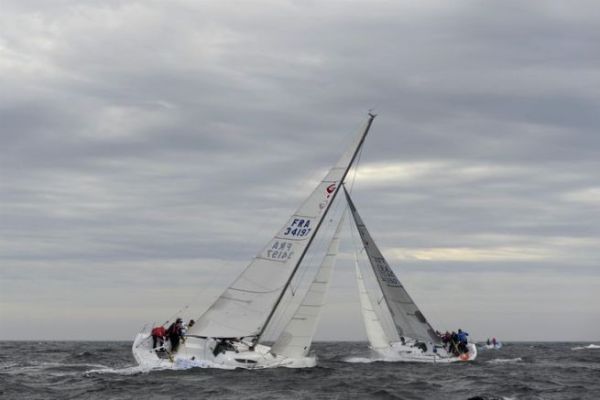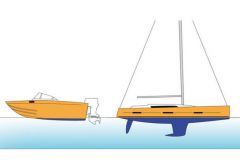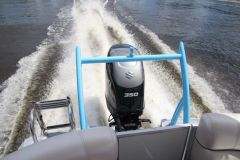The tacking procedure
A large part of the success of a tack lies in the way the tension sheet will be released. It's not only this one must be free to walk as we saw in the previous article but most importantly, you have to shock the genoa sheet at the right time . On a cruise ship, we'll organize the roles with one crewman ready to shock and another ready to tuck in, they're the raiders.
The role of the shocking crewman
When the tack is announced, it is not yet time to let go of the sheet. You have to hold on for a few seconds, otherwise you'll lose precious energy to cross the wind bed. However, it's all a question of timing, so don't wait too long to shock the sheet. If the crew member is too slow - or the rotation too fast - the genoa will inflate against it by forcing on the spreaders, wearing out the sail prematurely.
So, we shocked when the boat went into the wind when the genoa lead goes down and is no longer propelling. At this point, the genoa sheet can be released and the genoa can be shed at an incredible speed.
We'll make sure a "coconut" doesn't get stuck in a pulley. If this happens, it must be reported immediately to the helmsman. It will stay in the wind bed until you can jerk the sheet to undo the damn cockpit jib which would ruin your tack. If you are reactive, in less than 5 seconds you can fix this problem.

The role of the crew member who borders
The crew member in charge of the mooring must be patient before pulling like a sea calf on the genoa's clew. He must take up the slack at the end as the tack is made. If he pulls hard and too early on this sheet, there is a great risk of jamming the sail in the rigging, which requires more energy and time to free himself from it.
On the other hand, when the clew passes over to the other side, it's time to engage as if your life depended on it. Actually, it's the time you spend winching on the winch that depends on how fast you get on board. While there is still no tension in the sail, this is the ideal time to bring as much sheeting as possible, but be careful not to fall backwards.
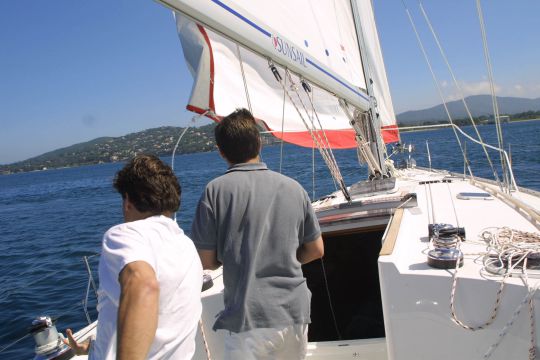
Positioning oneself well to minimize effort
To be effective, you need a good working position. We're going to stand facing the winch with our legs bent. By making large turns, you can get almost all the sheet on in a short period of time. You shouldn't even consider performing the manoeuvre while sitting on the cockpit bench. When the sheet becomes hard, we'll use the weight of his body and his legs to shoot as much as we can, but as soon as we're at the limit of our strength, we immediately switch to the winch handle.
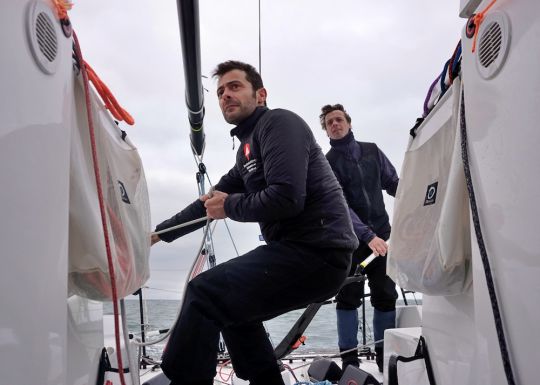
On some boats, one foot will rest on the coaming or even on the gunwales or the gunwale. Not all cruising yachts are equal in terms of manoeuvring ergonomics and sometimes you have to make do with a poor working position.
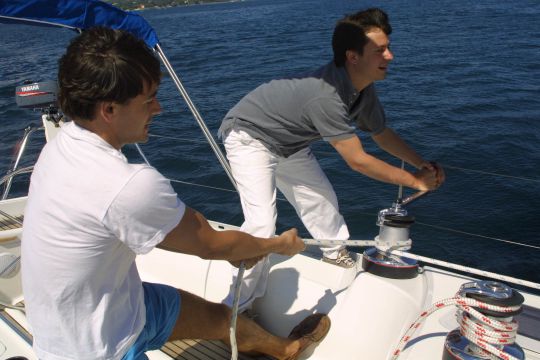
Knowing how to look to be effective
When tucking in a sail, there's no point in watching the winch and the crank handle go round and round.. . Indeed, there are few surprises to be expected from this side. On the contrary, it's the sail that is being trimmed that you have to watch carefully. In particular, the genoa's fall from the spreaders and shrouds should be taken into account so that it gets close to them without ever crashing into them.
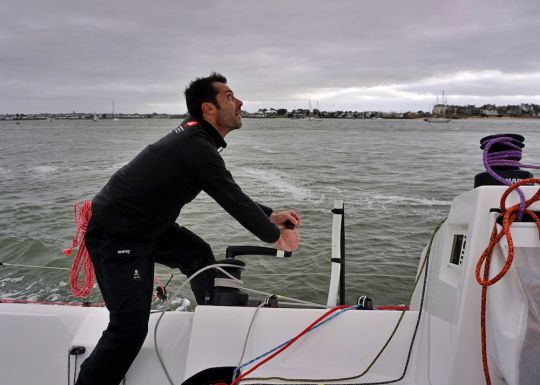
A team sport
During the time it takes for the helm to get into gear and the endless turns of the winch handle, the helmsman is asked to stay very close to the wind. This will give the helmsman the courtesy to facilitate the crew's work on the winches by limiting the wind pressure in the sail. The helmsman adapts to the crew's manoeuvring speed. It's very important, he can't go faster than the music, otherwise the manoeuvre will fail.
Let's be clear, tacking is a team sport where technique and timing are the keys to success, and it's only through repetition of the manoeuvre that you can perfect your tacks.


